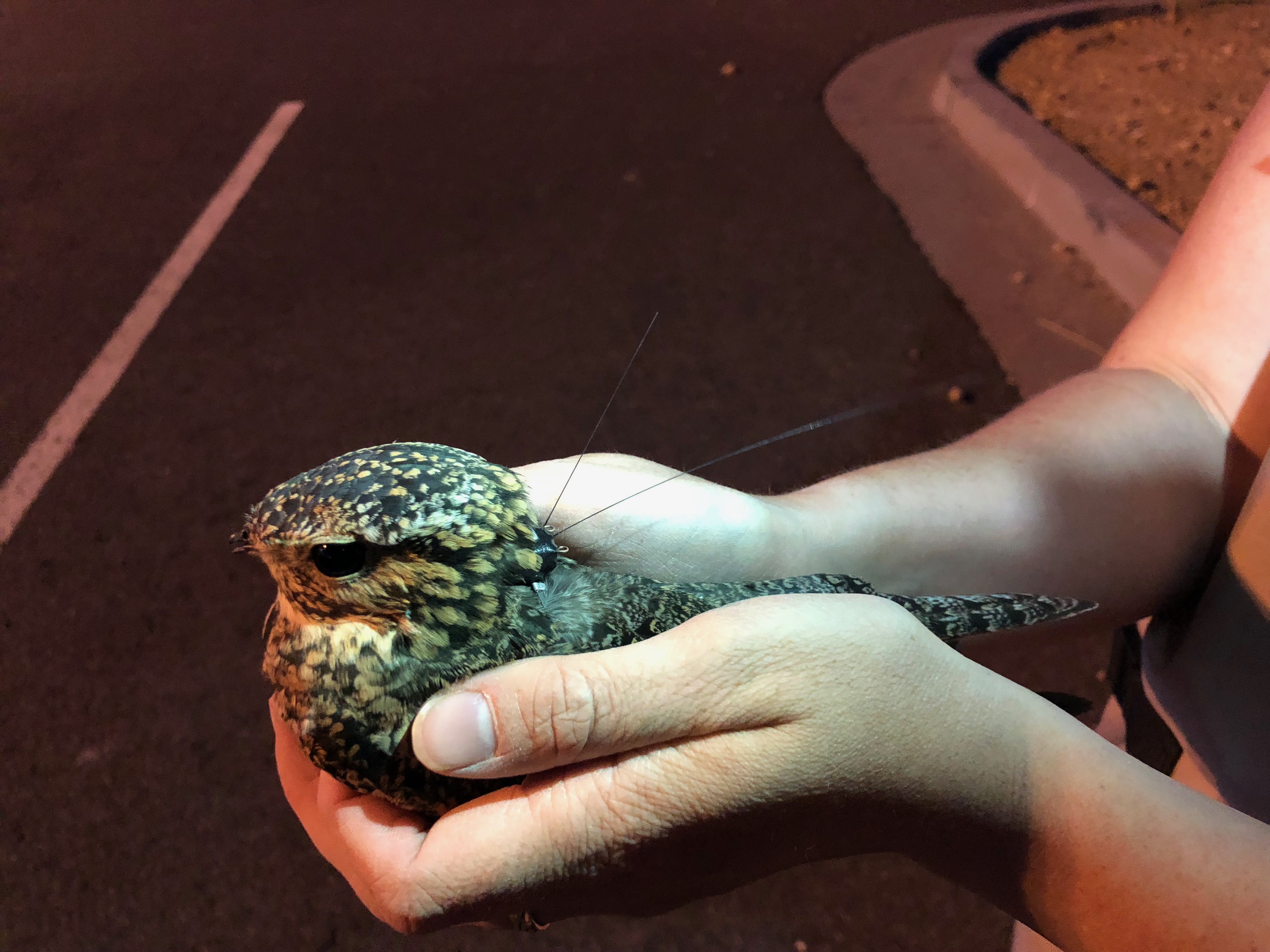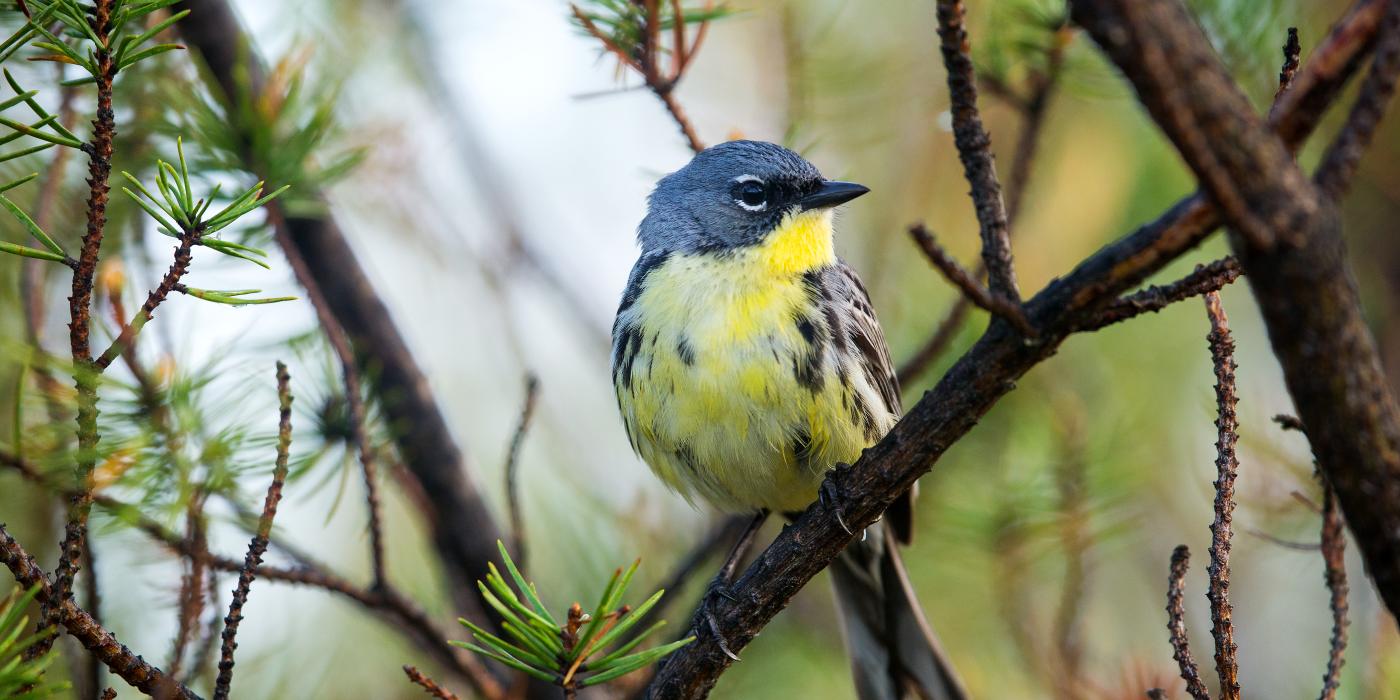Mysteries of Common Nighthawk Migration Unlocked Using GPS Tracking
New Findings Shed Light on Declining Populations
A new study led by Smithsonian Migratory Bird Center and University of Alberta biologists has created a comprehensive picture of the 10,000 kilometer migratory route of common nighthawks using GPS data. The study, published Feb. 2 in Ecography, is the first step in analyzing where and why nighthawk population numbers are declining.
“This charismatic migratory bird—known for its evening dances to catch insects—is one of many species whose name includes the word ‘common’ despite the fact that they’re disappearing from parts of their range,” said Autumn-Lynn Harrison, research ecologist at the Smithsonian Migratory Bird Center. “Our international partnership revealed the previously unknown migratory pathways of common nighthawks as an important step in planning their recovery.”
The common nighthawk is one of the most widely distributed birds in the Western Hemisphere, but also one of the most poorly understood due to its nocturnal nature. Not a hawk at all, but a member of the “nightjar” family—a group of nocturnal birds that “hawk” to catch and eat flying insects.
“Like many migratory bird species, common nighthawks are declining, but the rate of those declines varies across North America,” said Elly Knight, lead author and doctoral student in the Department of Biological Sciences at the University of Alberta. “Figuring out what causes those declines can be difficult and complicated for migratory species like the nighthawk because they occupy so many different places during the year.”
The project brought together researchers from the Smithsonian Migratory Bird Center, University of Alberta and Environment and Climate Change Canada in a massive collaboration across 13 locations throughout North America. During the summer months, the researchers fitted common nighthawks in North America with small backpacks equipped with GPS transmitters. The researchers sought a complete picture of common nighthawk migratory connectivity, which is the degree to which birds from separate populations stick together during their migrations.
“This is a critical start to developing conservation approaches, because it allows us to focus in on the times and places where population declines might occur,” said Knight, who completed the research under the supervision of professor Erin Bayne. “Without understanding migratory connectivity, there are a myriad of potential reasons why a migratory species might be declining. Without the full picture, we might miss times and places where population declines are occurring.”
Common nighthawks breed in North America but migrate in the fall up to 10,000 kilometers south to the Amazon and Cerrado biomes of South America. The birds make numerous stops along their journey, and GPS tracking allows biologists to understand where and when they are spending their time outside of their breeding areas.
“We were surprised to find that despite being distributed across North America, common nighthawks essentially use the same migratory route to their wintering grounds in South America,” Knight said. “All breeding populations fly east or west to congregate in the midwestern United States along what we call the Mississippi migration flyway. From there, they all mix together and take a common route south across the Gulf of Mexico, down through the northern Andes and onto their wintering grounds, mostly in Brazil. That common route means that there’s little migratory connectivity for common nighthawks outside the breeding season.”
“Now that we understand common nighthawk migratory connectivity, we can take the next steps along the path to understanding what limits their populations,” Knight said. “We plan to focus on the times and places with elevated connectivity: breeding, fall migration in North America and prior to crossing the Gulf of Mexico during spring migration.”
The researchers will compare hypotheses for the potential causes of declines that could occur in those areas and relate them to population trend data to see what explains the differences in trend between populations.
This collaborative project involved 29 researchers from 17 organizations and many volunteers through the Smithsonian’s Migratory Connectivity Project. The project was led by researchers from the Smithsonian Migratory Bird Center, University of Alberta and Environment and Climate Change Canada. Major funding was provided by Natural Sciences and Engineering Research Council of Canada (NSERC), Environment and Climate Change Canada, and ConocoPhillips.
About the Smithsonian Migratory Bird Center
The Smithsonian Migratory Bird Center (SMBC) is dedicated to understanding, conserving and championing the grand phenomenon of bird migration. Founded in 1991, and part of the Smithsonian Conservation Biology Institute (SCBI), SMBC scientists work to conserve migratory species through research and public education that foster a better understanding of migratory birds and the need to protect diverse habitats across the Western Hemisphere. SCBI plays a leading role in the Smithsonian’s global efforts to save wildlife species from extinction and train future generations of conservationists, spearhead research programs at its headquarters in Front Royal, Virginia, the Smithsonian’s National Zoo in Washington, D.C., and at field research stations and training sites worldwide.




